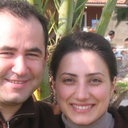Efficiency of some in vitro allergy tests for evaluating atopy in children and adults.
Mots clés
Abstrait
In recent years, an increase in the prevalence of allergic diseases has been reported, in industrialised countries. It is also a problem in non-industrialised countries, but its extent is less well documented. In this study, inhalant screening allergens (AlaTOP), food screening allergens (FP5E), and total and specific IgE were measured in 237 allergic patients (164 adults and 73 children) in order to examine the distribution of common allergens, the percentage of atopy/non-atopy among allergic children and adults in a developing country, Turkey, which has different environments and societies from western countries. We also evaluated the efficiency of automatic allergy screening tests in both groups. The sensitivity and specificity of AlaTOP in adults were 83% and 86%, respectively; these were 70% and 84%, respectively for FP5E, and the sensitivity and specificity of AlaTOP in children were 79% and 82%, while sensitivity and specificity of FP5E were 72% and 85%, respectively. The percentages of atopic male children (31%) were higher than in adults (21%). The reverse is true in adults. The most frequent allergens in childhood were Lolium perenne and cow milk, while in adults it was Lolium perenne. Total IgE levels were found to be statistically different between atopic and non-atopic subjects in adults (p < 0.001). This relationship was not found in children (p > 0.05). The sensitivity and specificity of total IgE in children were 57% and 67%, and in adults 84% and 67%, respectively. The lower specificity and sensitivity of total IgE level in children than in adults suggests that it is less useful for the diagnosis of allergy.


